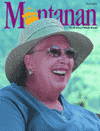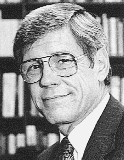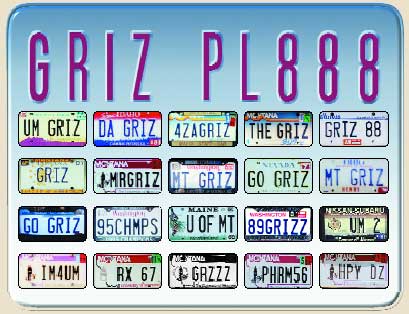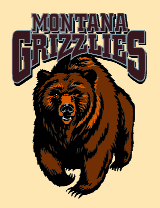
Fall 2001
CONTENTS Leaving Life in the Parking Lot
Where is the Parking Lot?
Fighting the World's Fight
Diva in Her Own Right
AROUND THE OVAL
LETTERS TO THE EDITOR
BOOKS
SPORTS
CLASS NOTES
ALUMNI NOTES
Contact Us
About the Montanan
PAST ISSUES
Around the Oval Greetings from the President 
As this issue of the Montanan goes to press, I would like to take the opportunity to reflect about the results of the Montana Legislative session. As you know, we went into the session working hard to open a constructive dialogue with policymakers about the adequacy of funding for higher education. We did so, in large part, because of urging from the accreditation team that visited the campus in April 2000. The team recommended reaffirmation of our institutional accreditation while noting the need to ensure that the available funding allowed us to fulfill the mission of the University. In our request to the legislature, we sought a 20 percent increase in state funding for the biennium as an investment in the future, pledging to do all that we could to enhance Montana’s economy and culture. In part, we based the request on a comparison of funding support in surrounding states. To reach the average level of support of those peer states would require annual increases of $500 per resident full-time student for five years. Currently, the state provides less than 20 percent of the total budget of The University of Montana. Stated another way, UM-Missoula has a much higher dependence on tuition revenue to support instructional programs than its peer institutions in other states. The legislature responded to our request but provided an increase of only 10 percent over the biennium, less than we requested but certainly significant for us. I must emphasize that we greatly appreciate the increased support. However, because the increase did not meet the perceived need, the state Board of Regents authorized tuition increases of 13 percent in each of the next two years. That will amount to increases of about $320 for Montana residents and roughly $1,100 for nonresidents each year. With the combination of increased state support and tuition revenue, we can protect the quality of our programs and deliver on the promises we make to students who choose to attend the University. We worked hard for a larger increase in state funding and lower tuition, but conditions in Montana and the demands on state funds did not allow for that outcome. Students have indicated their understanding, but they also have made it very clear that they expect to see qualitative improvements. The regents have issued a mandate to all the campuses to that same effect. UM will fulfill that mandate because we understand full well that people respond when they receive fair value for value given. During the next eighteen months, we will issue reports indicating how we have lived up to this pledge. In addition, we will continue a dialogue with policymakers, explaining the relationship between investment in higher education and the economic and cultural vitality of the state. Doing so will require that we seek and attain consensus about the contributions to Montana made by the Montana University System and UM-Missoula in particular. I look forward to engaging each and every one of you in this critical discussion.
So Much for that Natural Look The natural look is out in Washington-Grizzly Stadium and SprinTurf is in. Thanks to an anonymous donor, the Grizzlies will no longer have that, well ... grizzled look. Gone is the mud. Gone, too, the torn grass turf and matted, slippery common-use areas. Here to stay is an artificial turf UM officials believe to be the best and most cost-effective product on the market. SprinTurf differs from the three other products tested because it does not use sand as a filler, which could harden under Montana’s volatile temperatures. Opinions on the new turf vary. Many fans thought the natural turf gave the Grizzlies an advantage over visiting teams that were used to more “controlled” situations. Others have pointed out that the Griz may have had a disadvantage when they traveled because many of the teams they play have artificial turf. With the new turf the Griz will be playing most of their games on the same sort of surface. Regardless of one’s opinion on this hot topic, perhaps it could be agreed that SprinTurf may clean the Grizzlies up a bit, but their play should still have that . . . grizzled quality.
 GRIZ PL888's Evidence of Griz fans, up close and personal: Our thanks to readers who responded to the call for personalized UM and Griz license plates. It’s a clear indication that the Griz have national support — from Maine to Arizona. The plates shown above belong to the following, from top to bottom, left to right: Thomas W. Brown, Patrick Mourar, Lino Marsillo, Barb and Kirby Chistian, Michele Cunningham, John Bansch, John O. Ferro, John Kafentzis, Kevin Slovarp, Nancy Beck, Michael Higgs, Tom Cooper, Sean Harmon, Tom Cooper, Carl A. Gidlund, Deanna Koepke, Stan Beaudette, David Sorensen, Wells Larney and John Mohr. Thanks also to Loraine MacKenzie Cooney, John and Nancy Wagner and Bo Larsen.Lewis and Clark Scholars in Residence Two well-known scholars of the Lewis and Clark expedition will be in residence at UM fall semester, bringing historical expertise to campus as well as new perceptions of landscape geology of that time and today. Gary Moulton, the Thomas C. Sorenson Professor of History at the University of Nebraska-Lincoln, arguably the world’s preeminent Lewis and Clark scholar, will teach two history classes and will give several public lectures around the state. Moulton has spent the past twenty-five years editing the Lewis and Clark journals — twelve volumes in all, with a thirteenth, the index, expected out soon. Moulton also will serve as an academic consultant to the Earth Observing System Education Project’s National Lewis and Clark Education Center during his tenure at UM Daniel Botkin, former environmental studies professor at the University of California Santa Barbara, and director of the Program for Global Change at George Mason University, has published several books on the expedition. In Our Natural History: The Lessons of Lewis and Clark, Botkin discusses the approach taken by the expeditions’ leaders in gathering scientific data and providing detailed records of their encounters with the natural world. He uses the expedition to explore landscape geology, biology and other scientific phenomena from the perspective of the Corps of Discovery’s time as well as ours. Botkin will lead a group of K-12 teachers on field trips to various sites used by the expedition, give a series of public lectures and head a multi-disciplinary group in exploring the scientific implications of the Corps and its relevance today. Moulton will speak September 14 at UM-Missoula’s University Theatre; October 25 at UM-Western in Dillon; November 2 at Montana State University-Billings, and December 1 at the Lewis and Clark National Historical Trail Interpretive Center in Great Falls. Botkin will address the Travelers Rest Chapter at the Lolo Community Center on September 6, and speak at UM-Missoula’s University Theatre on October 17 and at the Lewis and Clark National Historic Trail Interpretive Center in Great Falls on November 2. All talks are scheduled for 7 p.m. and are free and open to the public. For more information, contact Alex Philp, director of the National Lewis and Clark Education Center; (406) 243-6469, aphilp@eoscenter.com. Moulton’s and Botkin’s residencies are sponsored by the center and give new resonance to UM’s award-winning institutional theme, The Discovery Continues. Pulitzer Prize
Sullivan previously had won an American Society of Newspaper Editors national award for profile writing and her short profiles were published in Best Newspaper Writing of 1991. Hitching Things Together
Growing up, Ferenstein spent most of her summers on her grandparents’ cattle ranch in central Oregon. She came to Missoula in 1991, where she attended the University and was active as an environmental organizer. It was in Missoula that she says she learned how all things are “hitched together,” an oft-quoted phrase of John Muir, Sierra Club founder. She left her position as an organizer for the Montana Environmental Information Center to take the helm at the Sierra Club June 1. Ferenstein travels a bit in her new position, but she still lives in Missoula. One of her goals is to ensure the Sierra Club is not perceived as being “anti-everything,” adding she wants to offer alternatives and choices to the American public. One project close to her heart is development of wind energy in northcentral Montana. “Those kinds of local projects are what the Sierra Club has always been best at,” she says. “We are a large national organization, but we have the local structure, too.”
UM’s Triathlalon Club poses for a photo after winning the Wildflower Triathalon in Monterey County, California. The team unseated the University of Colorado-Boulder’s team, which had won the competition for five years straight. (from left to right) Brandon Fuller, Tom Wagner, Nathan Olson, Jill Walker, Michael Gordon, Isaac Bertschi and Stevie Roark UM Through the Ages: Do You Have Generational Pull? We’re planning a feature article on families with three or more generations who attended and/or received degrees from UM. If your family boasts three generations of UM students, and you’d like to be considered for this feature, please send a brief description of the individuals in each generation, when they attended UM and what they studied. Include amusing anecdotes, interesting quotes, family legend or myth — whatever you think makes your story interesting to a wide range of readers. The generations should be in a direct line. For instance, do not count your uncle on your mother’s side as one generation, when the other two generation members are from your father’s side. Because of space limitations, we will only be able to feature a few families, but we will list all families who respond. Send your generational descriptions to: Montanan Editor, University Relations, The University of Montana, Missoula, MT 59812. Ode to a Friend
The University mourned the loss of alumnus and supporter Carroll O’Connor with the rest of the world when the well-loved and highly respected actor died in June. UM President George Dennison and his wife Jane attended the funeral in Los Angeles, along with Alumni Association Director Bill Johnston. Johnston writes to the Montanan: “Friends from Montana, friends and colleagues from the ‘industry’ and fans of John Carroll O’Connor gathered on June 26th to pay respect and say goodbye to our friend. We knew Carroll ’56 as a UM alumnus whose deep respect for the University led to a lifelong dedication and support of his alma mater. We also knew Carroll as a devoted partner to Nancy Fields O’Connor ’51. As a team, these two people had a large impact on our University, the movie industry, and on untold thousands through their charity and civic involvement. “Sally Struthers, who played Gloria, and Rob Reiner, who played Michael, in All in the Family were both able to attend the funeral service. When they met in the front of the church just before the service, the daughter and son-in-law of Archie Bunker embraced for several minutes. Initially, I thought that it was very touching to see the emotions of a daughter and her husband mourn the loss of a loved one. Then I remembered that those were roles played out in a sitcom and not real life. Or were they? Such was the magic and the gift of Carroll O’Connor. His gift, freely given, allowed others to enjoy, laugh and celebrate all that is important to us. Such was the person John Carroll O’Connor. Born August 2, 1924. Died June 21, 2001.” Native American Law Students Shine A two-person team of UM law students garnered third place at a national moot court competition sponsored by the Native American Law Student Association last spring. Ryan Rusche and Mato Standing High competed against forty-nine other teams at the contest, held at Lewis and Clark College in Portland, Oregon. The teams earned points by arguing a thirty-minute case about treaty rights and Pacific Northwest salmon recovery issues. Real-world judges, federal Indian law attorneys and professors from across the country served as mock U.S. Supreme Court judges in the competition. The UM students also took second place for their brief and Rusche was named third-best oralist, which made UM the first school to place in all three categories in the nine-year history of the competition. Rusche is an Assiniboine and Sioux tribal member from Montana’s Fort Peck Reservation. Standing High is a Sioux from the Rosebud Reservation in South Dakota. Teams from Hawaii and Ohio placed first and second in the competition. High Honors
Former Montana Governor Marc Racicot returned to his alma mater in May to deliver the Commencement speech for UM’s 2001 graduation. He received an honorary doctorate from UM at the ceremony. The Montana native is now a partner in the Washington, D.C., office of the Texas-based law firm Bracewell and Patterson. He recently was appointed chair of America’s Promise: The Alliance For Youth, which was founded and previously chaired by Colin Powell. Racicot received his bachelor’s degree from Carroll College in 1970 and his juris doctorate from UM’s law school in 1973. Racicot’s friendship with President George Bush put him in the national spotlight over the past year. He served on Bush’s legal team during the Florida election challenges and was considered by Bush for appointment as U.S. attorney general and FBI director, both of which he declined. However, two other Montanans have accepted appointments from President Bush; his first two nominees for U.S. district court judgeships are both Montanans who graduated from UM’s law school. Richard Cebull of Great Falls, a 1969 graduate, and Sam Haddon of Missoula, a 1965 graduate, were confirmed by the U.S. Senate in July to fill Montana’s two vacant federal district judgeships. Cebull will serve in Billings and Haddon in Great Falls. I'll Show You Synergy 
UM’s prowling grizzly bear logo may be as potent a force as the image it presents. In June it won the Synergy Award from the National Collegiate Licensing Association. The logo and associated products and marketing programs have won several national awards since 1999 when UM became the first university in the nation to market its own labeled line of clothing. “I think this award demonstrates how unique and innovative our program is,” says UM Executive Vice President Bob Frazier. “We were clearly one of the smallest schools represented at the National Collegiate Licensing Association, and for us to win out over schools the size of the University of Missouri or the University of California, Los Angeles is pretty significant.” All Griz Gear products are recruitment tools for UM, explains Denise Person, licensing director. She says all include hangtags that display a UM Web address and a toll-free number for Admissions and New Student Services; the products also are designed to appeal to the nine million tourists who visit Montana each year. Calling All Authors If you’re a UM alum and have a published book, the University Bookstore wants you. Keith Hardin, trade book buyer for the bookstore, reports he is willing and able to stock all books — fiction or nonfiction — written by UM alumni. He invites published authors to contact him via e-mail, khardin@selway.umt.edu or by writing him at The Bookstore, 5 Campus Drive, The University of Montana, Missoula, Montana 59801. He asks that authors provide the title of the book and the publisher. 
AROUND THE OVAL | SPORTS | CLASS NOTES | ALUMNI NOTES
|